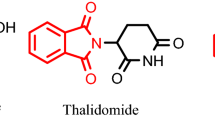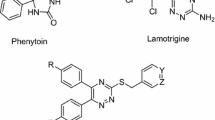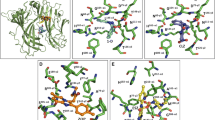Abstract
The GABAergic and glutamatergic neurotransmission systems are involved in seizures and other disorders of the central nervous system (CNS). Benzofuran derivatives often serve as the core in drugs used to treat such neurological disorders. The aim of this study was to synthesize new γ-amino acids structurally related to GABA and derived from 2,3-disubstituted benzofurans, analyze in silico their potential toxicity, ADME properties, and affinity for the GluN1–GluN2A NMDA receptor, and evaluate their potential activity and neuronal mechanisms in a murine model of pentylenetetrazol (PTZ)- and 4-aminopyridine (4-AP)-induced seizures. The in silico analysis evidenced a low risk of toxicity for the test compounds as well as the probability that they can cross the blood–brain barrier (BBB) to reach their targets in the CNS. According to docking simulations, these compounds bind at the active site of the NMDA glutamate receptor with high affinity. The in vivo assays demonstrated that 4 protects against 4-AP-induced seizure episodes, suggesting negative allosteric modulation (NAMs) at the glutamatergic NMDA receptor. Contrarily, 3 (the regioisomer of 4) and its racemic derivatives (cis-2,3-dihydrobenzofurans) were previously described to exacerbate such episodes, pointing to their positive allosteric modulation (PAMs) of the same receptor.













Similar content being viewed by others
References
Akyuz E, Paudel YN, Polat AK et al (2021) Enlightening the neuroprotective effect of quercetin in epilepsy: from mechanism to therapeutic opportunities. Epilepsy Behav 115:107701–107709. https://doi.org/10.1016/j.yebeh.2020.107701
Alexander SP, Peters JA, Kelly E et al (2017) The concise guide to pharmacology 2017/18: ligand-gated ion channels. Br J Pharmacol 174:S130–S159. https://doi.org/10.1111/bph.13879
Baragona F, Lomberget T, Duchamp C et al (2011) Synthesis of 5-substituted 2,3-dihydrobenzofurans in a one-pot oxidation/cyclization reaction. Tetrahedron 67:8731–8739. https://doi.org/10.1016/j.tet.2011.09.020
Bergmann R, Kongsbak K, Sørensen PL et al (2013) A unified model of the GABAA receptor comprising agonist and benzodiazepine binding sites. PLoS One 8:e52323. https://doi.org/10.1371/journal.pone.0052323
Bhagat K, Singh JV, Pagare PP et al (2020) Rational approaches for the design of various GABA modulators and their clinical progression. Mol Divers. https://doi.org/10.1007/s11030-020-10068-4
Brito VB, Rocha JBT, Folmer V, Erthal F (2009) Diphenyl diselenide and diphenyl ditelluride increase the latency for 4-aminopyridine-induced chemical seizure and prevent death in mice. Acta Biochim Pol 56:125–134. https://doi.org/10.18388/abp.2009_2524
Buettelmann B, Han B, Knust H, et al (2007) 3-ARYL-ISOXAZOLE-4-carbonyl-benzofuran derivatives Patent Grant number: 7388025, WO/2007/054444
Campos-Rodríguez C, Trujillo-Ferrara JG, Alvarez-Guerra A et al (2019) Neuropharmacological screening of chiral and non-chiral Phthalimide—containing compounds in mice: in vivo and in silico experiments. Med Chem (los Angeles) 15:102–118. https://doi.org/10.2174/1573406414666180525082038
Chen P-Y, Wu Y-H, Hsu M-H et al (2013) Cerium ammonium nitrate-mediated the oxidative dimerization of p-alkenylphenols: a new synthesis of substituted (±)-trans-dihydrobenzofurans. Tetrahedron 69:653–657. https://doi.org/10.1016/j.tet.2012.11.006
Choleris E (2001) A detailed ethological analysis of the mouse open field test: effects of diazepam, chlordiazepoxide and an extremely low frequency pulsed magnetic field. Neurosci Biobehav Rev 25:235–260. https://doi.org/10.1016/S0149-7634(01)00011-2
Coaviche-Yoval A, Andrade-Jorge E, Pérez-González C et al (2019a) Quantum reality in the selective reduction of a benzofuran system. Molecules 24:2061. https://doi.org/10.3390/molecules24112061
Coaviche-Yoval A, Luna H, Tovar-Miranda R et al (2019b) Synthesis and biological evaluation of novel 2,3-disubstituted benzofuran analogues of GABA as neurotropic agents. Med Chem (los Angeles) 15:77–86. https://doi.org/10.2174/1573406414666180524091745
Dauvermann MR, Lee G, Dawson N (2017) Glutamatergic regulation of cognition and functional brain connectivity: insights from pharmacological, genetic and translational schizophrenia research. Br J Pharmacol 174:3136–3160. https://doi.org/10.1111/bph.13919
Dawood KM, Abdel-Gawad H, Rageb EA et al (2006) Synthesis, anticonvulsant, and anti-inflammatory evaluation of some new benzotriazole and benzofuran-based heterocycles. Bioorg Med Chem 14:3672–3680. https://doi.org/10.1016/j.bmc.2006.01.033
Di Mola A, Caruso T, De Caprariis P, Massa A (2016) Reaction of benzal bromides in water/dioxane system for easy access to benzaldehydes and 2-formylbenzonitriles (2-cyanobenzaldehydes). ARKIVOC 2016:10. https://doi.org/10.3998/ark.5550190.p009.463
Engel J Jr (2013) Seizures and epilepsy. Oxford University Press, Oxford
Foss-Feig JH, Adkinson BD, Ji JL et al (2017) Searching for cross-diagnostic convergence: neural mechanisms governing excitation and inhibition balance in schizophrenia and autism spectrum disorders. Biol Psychiatry 81:848–861
Frigerio M, Santagostino M, Sputore S (1999) A user-friendly entry to 2-iodoxybenzoic acid (IBX). J Org Chem 64:4537–4538. https://doi.org/10.1021/jo9824596
Hackos DH, Lupardus PJ, Grand T et al (2016) Positive allosteric modulators of GluN2A-containing NMDARs with distinct modes of action and impacts on circuit function. Neuron 89:983–999. https://doi.org/10.1016/j.neuron.2016.01.016
Haris SP, Zhang Y, Le Bourdonnec B et al (2007) o-Naphthalenedicarboxaldehyde derivative of 7‘-aminonaltrindole as a selective δ-Opioid receptor affinity label. J Med Chem 50:3392–3396. https://doi.org/10.1021/jm061194h
Hoogervorst WJ, Goubitz K, Fraanje J et al (2004) (Bis(imino)aryl)rhodium(III) halide and methyl compounds. Organometallics 23:4550–4563. https://doi.org/10.1021/om049619q
Hrncic D, Rasic- Markovic A, Krstic D et al (2012) Inhibition of the neuronal nitric oxide synthase potentiates homocysteine thiolactone- induced seizures in adult rats. Med Chem (los Angeles) 8:59–64. https://doi.org/10.2174/157340612799278577
Huang RQ, Bell-Horner CL, Dibas MI et al (2001) Pentylenetetrazole-induced inhibition of recombinant γ-aminobutyric acid type A (GABAA) receptors: mechanism and site of action. J Pharmacol Exp Ther 298:986–995. https://jpet.aspetjournals.org/content/298/3/986
Johnson EL (2019) Seizures and epilepsy. Med Clin North Am 103:309–324
Khanam H, Shamsuzzaman (2015) Bioactive benzofuran derivatives: a review. Eur J Med Chem 97:483–504
Krämer SD, Aschmann HE, Hatibovic M et al (2016) When barriers ignore the “rule-of-five.” Adv Drug Deliv Rev 101:62–74
Kraus GA, Zhang N, Verkade JG et al (2000) Deprotonation of benzylic ethers using a hindered phosphazene base. A synthesis of benzofurans from Ortho-substituted benzaldehydes. Org Lett 2:2409–2410. https://doi.org/10.1021/ol0000758
Kumar PA, Das S, Mohapatra S et al (2020) Molecular modeling, synthesis, and evaluation of 1-(4-methoxybenzofuran-5-yl)-3-phenylpropane-1, 3-dione for its anxiolytic potentiality. J App Pharm Sci 10:139–144. https://doi.org/10.7324/JAPS.2020.10816
Li Z, Cai G, Fang F et al (2021) Discovery of novel and potent N-methyl-d-aspartate receptor positive allosteric modulators with antidepressant-like activity in rodent models. J Med Chem 64:5551–5576. https://doi.org/10.1021/acs.jmedchem.0c02018
Lipinski CA, Lombardo F, Dominy BW, Feeney PJ (2001) Experimental and computational approaches to estimate solubility and permeability in drug discovery and development settings 1PII of original article: S0169–409X(96), 00423–1. The article was originally published in Advanced Drug Delivery Reviews 23 (1997). Adv Drug Deliv Rev 46:3–26. https://doi.org/10.1016/S0169-409X(00)00129-0
Lorke D (1983) A new approach to practical acute toxicity testing. Arch Toxicol 54:275–287. https://doi.org/10.1007/BF01234480
More JD, Finney NS (2002) A simple and advantageous protocol for the oxidation of alcohols with o-Iodoxybenzoic acid (IBX). Org Lett 4:3001–3003. https://doi.org/10.1021/ol026427n
Nangare AK, Chavan AN (2015) Application of the benzofuran ring system in chemical structure of different pharmaceuticals. World J Pharm Res 4:1734–1746
Nevagi RJ, Dighe SN, Dighe SN (2015) Biological and medicinal significance of benzofuran. Eur J Med Chem 97:561–581
Ohkawa S, Fukatsu K, Miki S et al (1997) 5-Aminocoumarans: dual inhibitors of lipid peroxidation and dopamine release with protective effects against central nervous system trauma and ischemia. J Med Chem 40:559–573. https://doi.org/10.1021/jm960411j
Park NS, Jeong YS, Park CH et al (2001) Synthesis of novel 2-Aryl-2-methyl-2,3-dihydrobenzofurans. Bull Korean Chem Soc 22:139–140
Pawar MJ, Karale BK (2010) Synthesis of some new 3-substituted benzofuran derivatives by cyclization of various phenoxy acetic acid ethyl esters. Synth Commun 40:3603–3608. https://doi.org/10.1080/00397910903457308
Petersen JG, Bergmann R, Krogsgaard-Larsen P et al (2014) Probing the orthosteric binding site of GABAA receptors with heterocyclic GABA carboxylic acid bioisosteres. Neurochem Res 39:1005–1015. https://doi.org/10.1007/s11064-013-1226-6
Prut L, Belzung C (2003) The open field as a paradigm to measure the effects of drugs on anxiety-like behaviors: a review. Eur J Pharmacol 463:3–33. https://doi.org/10.1016/S0014-2999(03)01272-X
Radadiya A, Shah A (2015) Bioactive benzofuran derivatives: an insight on lead developments, radioligands and advances of the last decade. Eur J Med Chem 97:356–376
Sarlo GL, Holton KF (2021) Brain concentrations of glutamate and GABA in human epilepsy: a review. Seizure 91:213–227. https://doi.org/10.1016/j.seizure.2021.06.028
Sieghart W, Savic MM (2018) International union of basic and clinical pharmacology. CVI: GABAA receptor subtype-and function-selective ligands: key issues in translation to humans. Pharmacol Rev 70:836–878. https://doi.org/10.1124/PR.117.014449
Stroebel D, Buhl DL, Knafels JD et al (2016) A novel binding mode reveals two distinct classes of NMDA receptor GluN2B-selective antagonists s. Mol Pharmacol 89:541–551. https://doi.org/10.1124/mol.115.103036
Sun C, Xu B (2008) A tandem elimination−cyclization−suzuki approach: efficient one-pot synthesis of functionalized (Z)-3-(Arylmethylene)isoindolin-1-ones. J Org Chem 73:7361–7364. https://doi.org/10.1021/jo801219j
Tharwat A, Moemen YS, Hassanien AE (2017) Classification of toxicity effects of biotransformed hepatic drugs using whale optimized support vector machines. J Biomed Inform 68:132–149. https://doi.org/10.1016/j.jbi.2017.03.002
Tripathi L, Kumar P, Singh R, Stables JP (2012) Design, synthesis and anticonvulsant evaluation of novel N-(4-substituted phenyl)-2-[4-(substituted) benzylidene]-hydrazinecarbothio amides. Eur J Med Chem 47:153–166. https://doi.org/10.1016/j.ejmech.2011.10.038
Uyanik M, Akakura M, Ishihara K (2009) 2-Iodoxybenzenesulfonic acid as an extremely active catalyst for the selective oxidation of alcohols to aldehydes, ketones, carboxylic acids, and enones with oxone. J Am Chem Soc 131:251–262. https://doi.org/10.1021/ja807110n
Wang H, Lv S, Stroebel D et al (2021) Gating mechanism and a modulatory niche of human GluN1–GluN2A NMDA receptors. Neuron 109:2443-2456.e5. https://doi.org/10.1016/j.neuron.2021.05.031
Zhou Q, Sheng M (2013) NMDA receptors in nervous system diseases. Neuropharmacology 74:69–75
Acknowledgements
The authors are grateful to the Consejo Nacional de Ciencia y Tecnología (Mexico) for the scholarship to AC-Y and for the financial support given to this project (CB166271). The authors deeply appreciate the experimental support received from the UAM-Xochimilco, the Centro de Nanociencias y Micro Nanotecnología of the Instituto Politécnico Nacional and the Laboratory of Molecular Modeling, Drug Design, and Bioinformatic of the Escuela Superior de Medicina, Instituto Politécnico Nacional, Mexico, for NMR and HRMS spectra. We thank Bruce Allan Larsen for reviewing and proofreading the manuscript. In memory of Ph.D.. J. Samuel Cruz-Sánchez †.
Author information
Authors and Affiliations
Contributions
AC-Y, HL, RT-M, and JGT-F designed the study and experiments. AC-Y carried out the experiments. All authors analyzed the results, and contributed to the preparation, edition, and analysis of the manuscript. They have all read and approved the final version of the manuscript and give their consent for its publication.
Corresponding authors
Ethics declarations
Conflict of interest
The authors declare that they have no conflict of interest.
Ethical approval
All the study procedures were in accordance with ethical standards.
Additional information
Handling editor: T. Harkany.
Publisher's Note
Springer Nature remains neutral with regard to jurisdictional claims in published maps and institutional affiliations.
Supplementary Information
Below is the link to the electronic supplementary material.
Rights and permissions
About this article
Cite this article
Coaviche-Yoval, A., Trujillo-Ferrara, J.G., Soriano-Ursúa, M.A. et al. In silico and in vivo neuropharmacological evaluation of two γ-amino acid isomers derived from 2,3-disubstituted benzofurans, as ligands of GluN1–GluN2A NMDA receptor. Amino Acids 54, 215–228 (2022). https://doi.org/10.1007/s00726-021-03108-2
Received:
Accepted:
Published:
Issue Date:
DOI: https://doi.org/10.1007/s00726-021-03108-2




